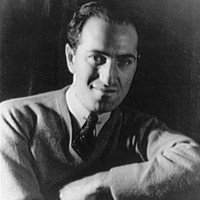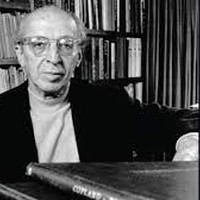Copland’s Appalachian Spring

Sponsored By
- November 25, 2017


Sponsored By

In 1971 I was asked by Sydney Hodkinson, composer and conductor of The Saint Paul Chamber Orchestra, to write a piece for his fledgling organization. The unusual disposition of the orchestra – one flute, two oboes, one clarinet, two bassoons, two horns, one keyboard and a small complement of strings (the timpani were added later) – suggested an 18th century ensemble, thus the subtitle “for (almost) 18th -century orchestra.”
I’ve always been fascinated by the commedia dell’arte with its stock characters such as Harlequin, Columbine and Punchinello who, given a plot, would improvise a play in character. Commedia’s Italianate atmosphere is intensified by the tarantella that is central to the piece. While writing the program note for the first performance of Commedia in Minneapolis in 1972, I happened by pure coincidence upon this apposite quote:
“...but after being bitten by the Tarantula, there was, according to popular opinion, no way of saving lives except by music...Those who were bitten generally fell into a state of melancholy and appeared to be stupefied...This condition was, in many cases, united with so great a sensibility to music that, at the very first tones of their favorite melodies, they sprang up shouting for joy, and danced on without intermission until they sank to the ground exhausted...The number of those affected by it increased beyond all belief, for whoever had...even fancied that he had been bitten by a poisonous spider...made his appearance annually whenever the merry notes of the Tarantella resounded.” (Dancing Mania in the Middle Ages, J.F.C. Hecker, M.D., 1837)
By far my most-played orchestral work, Commedia has been performed well over a thousand times. It was first recorded by the SPCO in 1975 under Dennis Russell Davies.
William Bolcom ©2008
Graceful Ghost Rag was first composed for piano as a reminiscence of William Bolcom’s father upon his death in 1970. The piece was greatly influenced by the French Creole composer Louis Chauvin whose sole existing publication, “Heliotrope Bouquet,” consists of the first two strains (the term for the 16-measure sections of a classic rag) as taken down by Scott Joplin, who seems to have supplied the last two to complete the rag.
Graceful Ghost begins with no introduction, suggesting both D-flat major and B-flat minor tonalities until the very end of the first section, when it settles into minor in the second strain. A number of syncopations, including the offset of this strain by a half-measure, forecast harmonic changes that follow and provide a fascinating trip through varying keys until the rag works its way back to B-flat minor. The gentle trio in G-flat, a key rarely seen in rags since Joseph Lamb's “Excelsior” in 1909, never fully resolves back to its tonic yet provides a truly graceful flow, evocative of the title, in its subtle return to the opening theme.
Aaron Grad ©2017
John Corigliano ranks among his generation’s most acclaimed American composers. His numerous honors include a Guggenheim Fellowship, Grawemeyer Award, the Pulitzer Prize for his Symphony No. 2, two Grammy Awards for Best Contemporary Composition, and an Academy Award for his film score to The Red Violin.
Though establishing his reputation with his earliest works’ conservative idiom (complemented by his oft-professed imperative that modern music remain accessible), Corigliano has cultivated a technique as rigorously progressive as it is inviting. Joshua Bell has praised Corigliano’s language as “unique and unmistakable, yet rooted in the grand traditions of the past. While his music is often harmonically complex and rhythmically challenging, he also dares to write a simple, beautiful melody.”
Corigliano composed Snapshot: Circa 1909 in 2003 for the Elements Quartet.
When the Elements Quartet asked me to write a piece inspired by a photograph, I immediately thought of one I have had since I was a child. It was taken in Greenwich Village in my grandparents’ Sullivan Street apartment, which I have only seen in photos.
The photographer came to do a group shot of my grandparents, whom I never met, and their six children. After taking that picture, the photographer was coaxed into doing a shot of my father and his brother Peter performing on violin and guitar.
The picture has never ceased to move me. My father looked about eight years old, wearing knickers and earnestly bowing his violin, while my uncle, then a teenager, held a guitar in an aristocratic position and stared at the camera.
In the short quartet inspired by the photo, the second violin plays a nostalgic melody, while the other strings pluck their instruments in a guitar-like manner. This solo is obviously the boy violinist singing through his instrument. After the melody is completed, however, the first violin enters, muted, in the very highest register. In my mind, he was playing the dream that my eight-year-old father must have had—of performing roulades and high, virtuosic, musing passages that were still impossible for him to master. This young violinist grew into a great soloist—my father, John Corigliano, concertmaster of the New York Philharmonic for over a quarter century. He, as an adult, performed the concerti and solos that as a child he could only imagine.
The two violinists, boy and dream, join together at the end as the guitar sounds play on.
Patrick Castillo ©2014
 Listen to Audio
Listen to Audio
George Gershwin was eleven when his family first brought a piano into their apartment. Four years later, after some lessons in classical repertoire including Chopin and Debussy, Gershwin dropped out of high school and found work as a “song plugger” on Tin Pan Alley, New York’s row of music publishing firms. He began to write his own songs, signed on with a publisher, and gravitated toward Broadway, finding work as a rehearsal pianist on a Jerome Kern show. Gershwin’s first Broadway production opened in 1919, and the influential performer Al Jolson added Gershwin’s “Swanee” to a revue that year. Jolson’s recording of “Swanee” sold millions of copies in 1920 and put Gershwin on the map as a top songwriter. Still Gershwin never stopped stretching himself in his unfairly short life; he did not settle into the breezy patchwork style of Rhapsody in Blue, written at age 25, nor simply churn out hit Broadway tunes like the many he co-wrote with his lyricist brother, Ira.
The last musical Gershwin completed was Shall We Dance, a 1937 film starring Fred Astaire and Ginger Rogers. With Astaire playing a famous ballet dancer whose real love was jazz, the score led Gershwin to create some of his most sophisticated hybrids of classical and jazz styles. The flirtatious Promenade, affectionately known as Walking the Dog, features a solo clarinet (a part written for jazz bandleader Jimmy Dorsey) inserting “blue notes” and other sassy inflections. In the movie, this music accompanies a wordless scene in which the prim and disinterested Ginger Rogers walks her dog on the deck of a cruise ship; Astaire’s character bribes his way to borrowing a dog just so he can stroll alongside her.
Aaron Grad ©2017
Commissioned by Chee-Yun and Spoleto USA, Arches was premiered by Chee-Yun at Seoul Arts Center, Seoul Korea in October 2000. In its alternation between “caprices” and “arias”, the work moves between the poles of virtuosity and lyricism throughout. The title was suggested by the symmetrical form of the piece (Caprice—Aria—Caprice—Aria—Caprice) and by the key scheme which supports this symmetry and the many arch-like figures that arise. The only pause in the work occurs after the first Caprice. Caprice, the first movement, whose influences are both Baroque and Appalachian in nature, begins innocently enough and continually accelerates to a very fast tempo. It was inspired by a scene from the film The Red Violin (scored by John Corigliano) in which a young prodigy is pushed by his teacher to play an etude faster and faster until he is pressed to the absolute limit.
Kevin Puts ©
 Listen to Audio
Listen to Audio
In the wake of two well-received ballets set in the American West — Billy the Kid (1938) and Rodeo (1942) — Aaron Copland began Appalachian Spring in 1943. He created the ballet for the dancer and choreographer Martha Graham, and he worked under the title Ballet for Martha until not long before the premiere, when Graham suggested Appalachian Spring, borrowing a phrase from Hart Crane’s poem “The Bridge.”
Created for the 500-seat auditorium at the Library of Congress in Washington, DC, this ballet needed a suitably compact pit orchestra, so Copland used just thirteen instruments in the original version. The next year he arranged most of the ballet into a concert suite for orchestra, and his publisher later added the option heard here, which preserves the original chamber ensemble scoring while adopting the structure of the concert suite.
The wonder of Appalachian Spring is how it achieves so much using such simple and familiar musical ingredients. The first section assembles its hazy wash of consonant sonorities by enunciating plain triads and the resonant intervals of fourths and fifths. The following section energizes similarly basic materials — octave leaps, triadic intervals and descending major scales — into spry dance music. There is a tender scene for the young couple, a lively romp depicting the revivalist and his dancing minions, and then a brisk solo dance for the bride, which dissipates into a return of the gentle, triadic wash of the beginning.
The famous section that follows, starting with a theme in the clarinet, presents the tune of Simple Gifts, a Shaker dance song written in 1848 by Joseph Brackett. The humble melody fits seamlessly into the homespun, diatonic language of Copland’s score, and its increasingly grand variations rise to a transcendental climax.
Aaron Grad ©2024
Get driving directions and find nearby parking.
Find dining options close to the venue.
View seating charts to find out where you'll be seating.
SPCO concerts are made possible by audience contributions.
For exclusive discounts, behind-the-scenes info, and more:
Sign up for our email club!
